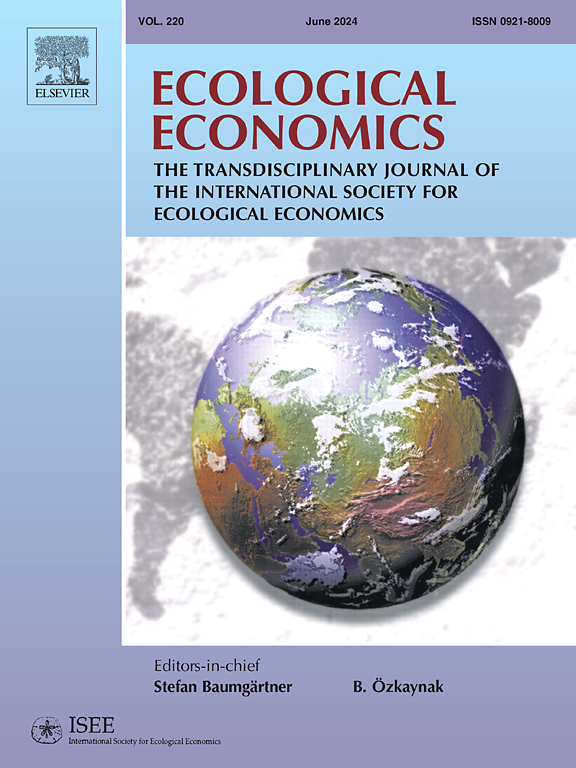China's current carbon inequality is predominantly determined by capital disparity
IF 6.6
2区 经济学
Q1 ECOLOGY
引用次数: 0
Abstract
The responsibility for carbon emissions is unequally distributed among socioeconomic groups due to consumption and wealth inequality. Examining carbon inequality is crucial for achieving fair and just climate mitigation. As the world largest carbon emitter, China has been the focus of numerous studies on carbon inequality. However, most of these studies have primarily concentrated on the inequality of household consumption-related emissions, overlooking the nation's largest carbon emission category: capital formation. In this study, we investigate national and provincial carbon inequality in China among income groups, involving three consumption-based emission categories: household consumption, government spending, and capital formation-related emissions. The results reveal that the top 20 % of urban residents, comprising 9.7 % of the population, are responsible for 33 % of the capital formation-related carbon emissions. In contrast, the lowest 20 % of rural residents, accounting for 8.6 % of the population, contribute only 2 % of such emissions. The carbon inequality associated with capital formation is significantly larger than that of household consumption in almost all provinces. Further decomposition analysis shows that carbon inequality in capital formation is the dominant contributors (more than 60 % in 24 out of 29 provinces) to China's overall carbon inequality. These findings suggest that reducing carbon emissions and addressing inequality should focus on the capital/investment of the high-income groups.
求助全文
约1分钟内获得全文
求助全文
来源期刊

Ecological Economics
环境科学-环境科学
CiteScore
12.00
自引率
5.70%
发文量
313
审稿时长
6 months
期刊介绍:
Ecological Economics is concerned with extending and integrating the understanding of the interfaces and interplay between "nature''s household" (ecosystems) and "humanity''s household" (the economy). Ecological economics is an interdisciplinary field defined by a set of concrete problems or challenges related to governing economic activity in a way that promotes human well-being, sustainability, and justice. The journal thus emphasizes critical work that draws on and integrates elements of ecological science, economics, and the analysis of values, behaviors, cultural practices, institutional structures, and societal dynamics. The journal is transdisciplinary in spirit and methodologically open, drawing on the insights offered by a variety of intellectual traditions, and appealing to a diverse readership.
Specific research areas covered include: valuation of natural resources, sustainable agriculture and development, ecologically integrated technology, integrated ecologic-economic modelling at scales from local to regional to global, implications of thermodynamics for economics and ecology, renewable resource management and conservation, critical assessments of the basic assumptions underlying current economic and ecological paradigms and the implications of alternative assumptions, economic and ecological consequences of genetically engineered organisms, and gene pool inventory and management, alternative principles for valuing natural wealth, integrating natural resources and environmental services into national income and wealth accounts, methods of implementing efficient environmental policies, case studies of economic-ecologic conflict or harmony, etc. New issues in this area are rapidly emerging and will find a ready forum in Ecological Economics.
 求助内容:
求助内容: 应助结果提醒方式:
应助结果提醒方式:


